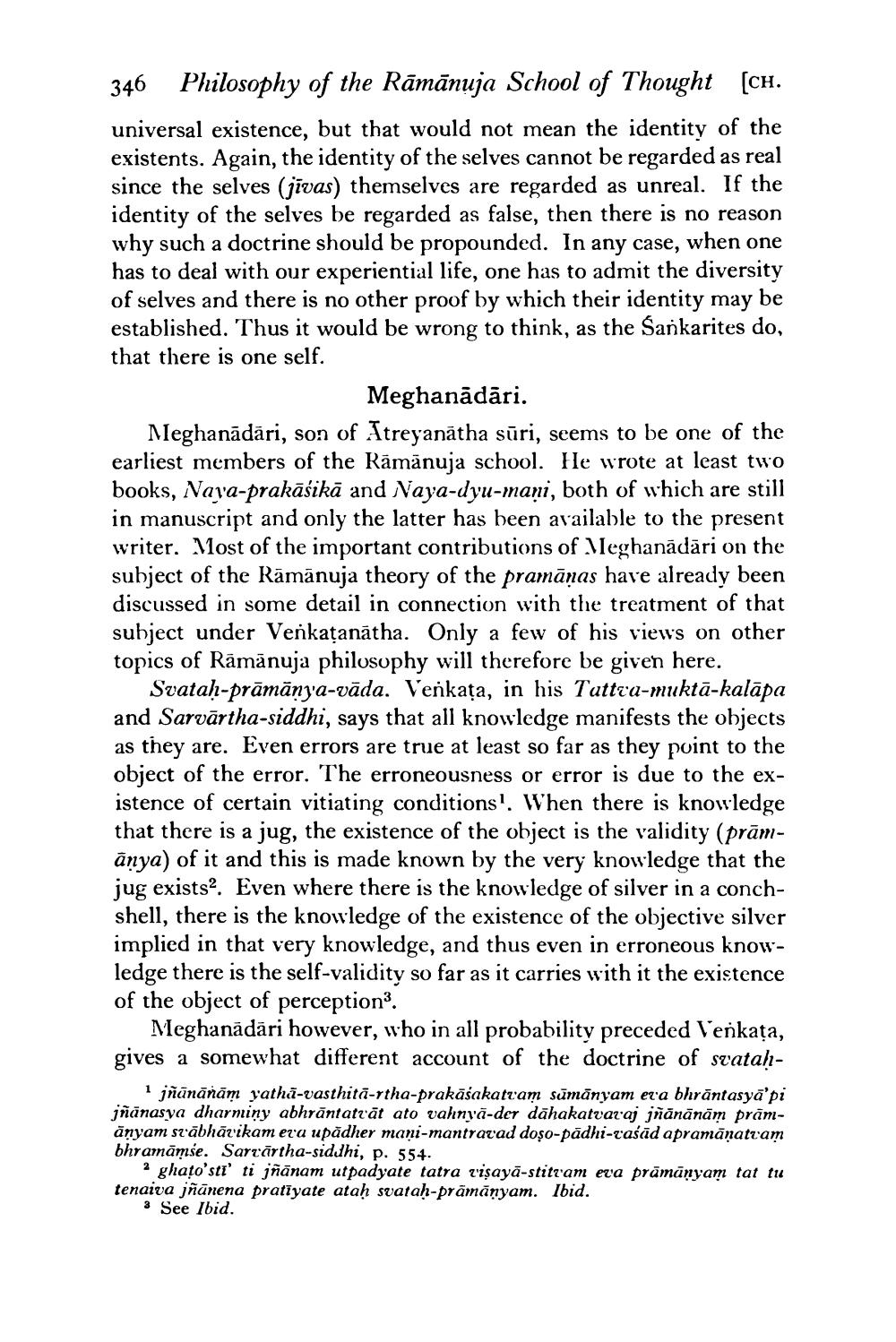________________
346
Philosophy of the Rāmānuja School of Thought [CH.
universal existence, but that would not mean the identity of the existents. Again, the identity of the selves cannot be regarded as real since the selves (jīvas) themselves are regarded as unreal. If the identity of the selves be regarded as false, then there is no reason why such a doctrine should be propounded. In any case, when one has to deal with our experiential life, one has to admit the diversity of selves and there is no other proof by which their identity may be established. Thus it would be wrong to think, as the Sankarites do, that there is one self.
Meghanādāri.
Meghanādāri, son of Atreyanatha sūri, seems to be one of the earliest members of the Ramanuja school. He wrote at least two books, Naya-prakāśikā and Naya-dyu-mani, both of which are still in manuscript and only the latter has been available to the present writer. Most of the important contributions of Meghanādāri on the subject of the Rāmānuja theory of the pramānas have already been discussed in some detail in connection with the treatment of that subject under Venkatanatha. Only a few of his views on other topics of Ramanuja philosophy will therefore be given here.
Svataḥ-prāmānya-vāda. Venkata, in his Tattva-muktā-kalāpa and Sarvartha-siddhi, says that all knowledge manifests the objects as they are. Even errors are true at least so far as they point to the object of the error. The erroneousness or error is due to the existence of certain vitiating conditions'. When there is knowledge that there is a jug, the existence of the object is the validity (pramanya) of it and this is made known by the very knowledge that the jug exists2. Even where there is the knowledge of silver in a conchshell, there is the knowledge of the existence of the objective silver implied in that very knowledge, and thus even in erroneous knowledge there is the self-validity so far as it carries with it the existence of the object of perception3.
Meghanādāri however, who in all probability preceded Venkata, gives a somewhat different account of the doctrine of svataḥ
1
1 jñānānām yatha-vasthita-rtha-prakāśakatvam sāmānyam era bhrāntasya'pi jñānasya dharminy abhrantatrat ato vahnya-der dahakatvaraj jñānānām prāmāṇyam svābhāvikam era upadher mani-mantravad doṣo-padhi-vaśād apramāṇatram bhramamse. Sarvartha-siddhi, p. 554.
2 ghato'sti' ti jñānam utpadyate tatra visaya-stitvam eva pramanyam tat tu tenaiva jñānena pratiyate ataḥ svataḥ-prämāṇyam. Ibid.
3 See Ibid.




